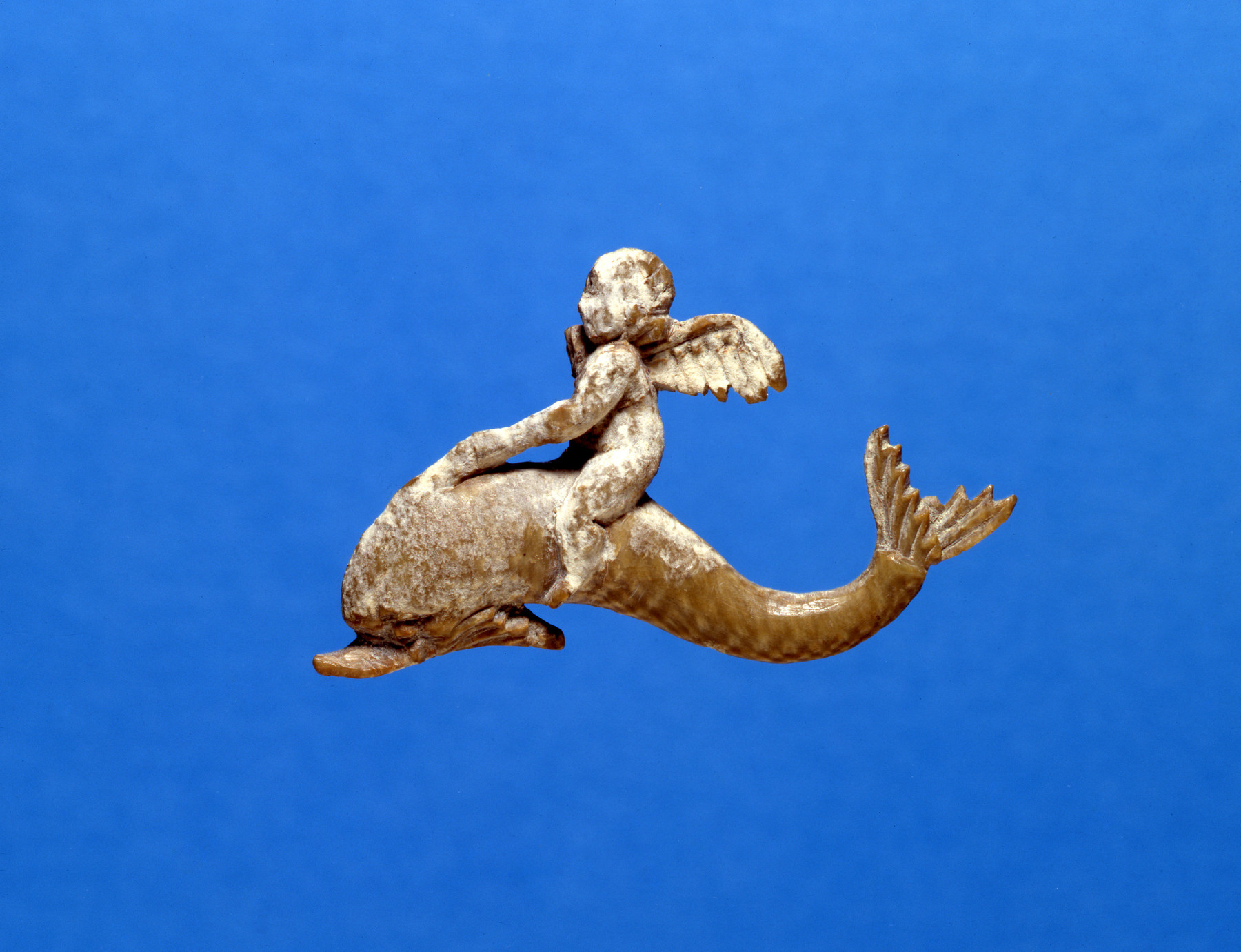Eros on a Dolphin
(Roman Empire )
The representation of Eros on a dolphin occurs as early as the 5th century BC, but retained its popularity throughout antiquity, appearing on gems, coins, and in other mediums. The motif sometimes occurs as an adjunct to images of Aphrodite, and would therefore be an appropriate embellishment of a woman's jewel box or cosmetic container.
One wing of Eros has broken off, otherwise the object is intact. A white incrustation adheres to the left part of the appliqué; the back is flat and lacks any indication of how it might have been attached to a larger object.
Its history suggests it was found in Egypt.
Provenance
Provenance (from the French provenir, 'to come from/forth') is the chronology of the ownership, custody, or location of a historical object. Learn more about provenance at the Walters.
Giovanni Dattari, Cairo [date and mode of acquisition unknown]; Jean P. Lambros and Giovanni Dattari Sale, Paris, June 17-19, 1912, lot 553; Henry Walters, Baltimore, 1912 (?), by purchase; Walters Art Museum, 1931, by bequest.
Measurements
H: 1 11/16 in. (4.3 cm)
Credit Line
Acquired by Henry Walters, 1912 (?)
Location in Museum
Not on view
Accession Number
In libraries, galleries, museums, and archives, an accession number is a unique identifier assigned to each object in the collection.
In libraries, galleries, museums, and archives, an accession number is a unique identifier assigned to each object in the collection.
71.606




